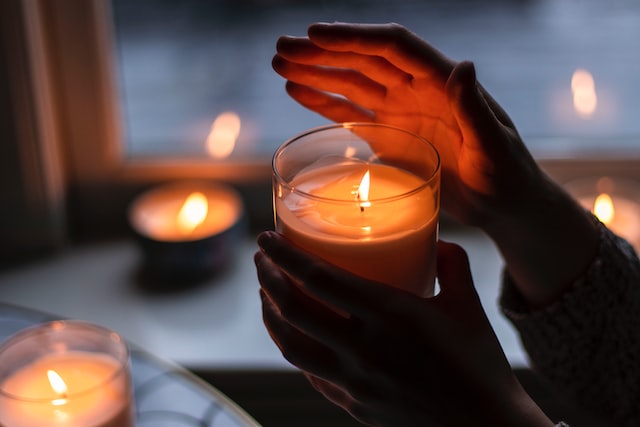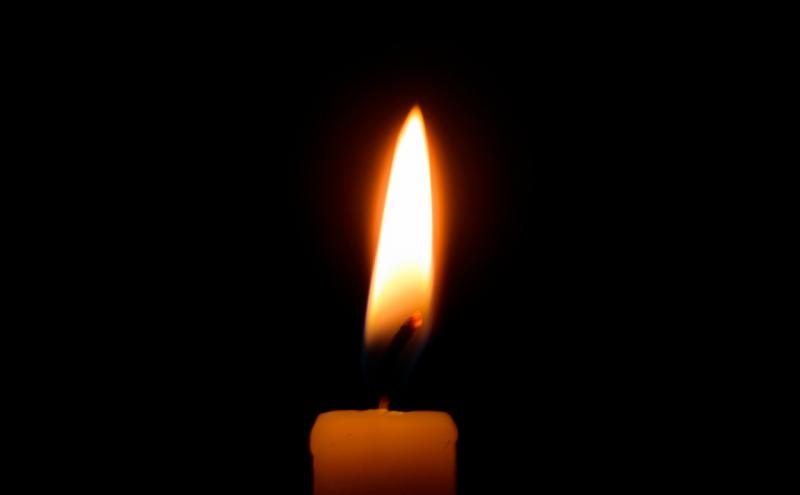Article looks at how family and whānau voice is included in death reviews
Mon 13 Feb 2023
The article reflects on how family and whānau voice is included in the review process of the Family Violence Death Review Committee (FVDRC).

Article about family and whānau voice in death review process
The article, Te Pou: An Indigenous Framework to Evaluate the Inclusion of Family Voice in Family Violence Homicide Reviews, was authored by Michael Roguski, Denis Grennell, Synthia Dash, Irene de’Haan, Fiona Cram and Pauline Gulliver. The authors have been involved with in-depth reviews on behalf of the Aotearoa New Zealand Family Violence Death Review Committee (FVDRC).
The authors used an indigenous framework, Te Pou (2019), to critically reflect on how whānau voice is included in the death review process, identifying strengths and limitations of the current process and legislation. The framework was designed to guide the mortality review committees at the Health Quality & Safety Commission in interpreting and reporting on Māori mortality.
From October 2019 to November 2021, the FVDRC completed 6 in-depth reviews that included whānau voice, including Māori, Pasifika and Pākehā whānau. Reflecting on these reviews, the authors identified that "While the inclusion of whānau voice is a step forward for the FVDRC, it is apparent the process can be improved to place the whānau at the centre." They outline changes that can be made now, and call for a focus on healing and the "reconceptualization of the legislative framework and support system".
The authors discuss the importance of including the whānau voice to help ensure that fatality reviews take place within an understanding of the wider context of individual's and families' lives including an understanding of historical and structural inequities. The authors also note the limitations on their ability to involve whānau:
"Due to the legislative framework under which the FVDRC was established (New Zealand Public Health and Disability Amendment Act, 2010), whānau involvement is restricted to providing input through a discussion with representatives of the review panel. Whānau are unable to receive a copy of reports arising from the review process."
In the article, the term whānau includes family, whānau and friends of the deceased or offender to provide a wider scope than a 'nuclear family.' The authors use the term uiui whānau to refer to the conversations with whānau. In explaining their use of the term uiui whānau, the authors comment that:
The naming of the process being undertaken is something that the FVDRC has wrestled with. “Interviews” give connotations of a formal process, while the review team set out to ensure that participation is comfortable. At these early stages we have termed our process, uiui whānau, which describes a line of enquiry or questioning.
For the uiui whānau, the FVDRC is working towards a process of reconnection and healing.
The authors describe aspects of the uiui whānau that work well:
- FVDRC panel members engage with whānau with utmost respect
- Sufficient time and space is allowed for the process and for whānau to ask questions, noting that there are differences in the concept of time for Pasifika and Māori compared to western concepts of time
- Cultural leads make contact with the whānau, suggest koha, outline tikanga and open and close sessions
- Cultural leads also watch for indications of discomfort, trauma or miscommunication
- Cultural leads can help identify power imbalances and suggest strategies to address these
- Cultural leads follow up with whānau after the uiui whānau is completed
- Collaboration with kaumātua and kaupapa Māori researchers allows the review panel to deepen their understanding of the death event.
When discussing the valuable role of the cultural leads, the authors note that the kaumātua, in their role as cultural leads, must often navigate complex relationships, particularly when there is shared whakapapa with the whānau, highlighting:
"It is testament to those kaumātua who have been involved to date that they are able to negotiate the complexities of engagement and this underscores the importance of a considered appointment process for this role."
The authors also identified opportunities to improve:
- Readiness and barriers to participating could be considered by first establishing a trusted relationship between whānau and a kaumātua or cultural lead before inviting whānau to participate
- The limits on whānau participation means whānau can't participate in identifying recommendations
- The limits on whānau participation also means there is no reciprocal process for whānau to understand and engage with the outcomes of the review "re-establishing the inequitable relationship between agencies and whānau"
- Uiui whānau don't allow for informal conversations that could build trust and support whānau to share valuable insights
- Uiui whānau should allow for relationships to be developed and consideration of the broader needs of whānau, providing opportunity to identify unmet needs
- The process "cannot be considered a healing process due to confidentiality required by the legislation"
- The uiui whānau process is largely transactional in nature and does not support a relational approach.
In making recommendations, the authors discuss that it would be possible to involve whānau more fully in the review process within the current legislative framework by:
- "identifying components of the whānau interview that provided additional depth of understanding about the actions of statutory agencies and how they were received by the deceased and/or offender;
- reflecting this back to whānau members during a follow-up session to discuss the results of the panel review day; and
- co-producing recommendations alongside whānau members."
They also note that it might be possible to release finalised recommendations to whānau. However, the authors also note the burden that families might feel, since the current legislative framework creates no accountability for those recommendations to be actioned.
The authors highlight that the uiui whānau does not consider healing and "...does not allow for true engagement at a cultural level." They write that "...the FVDRC is guilty of assimilating Te Pou and the uiui whānau into a Western process." Instead, they propose that if the FVDRC replaced Western ideals of professional distance with a duty to care, it would frame "...the review as a component of a healing journey for whānau rather than the potential to reinforce structural power imbalances."
In discussing these reflections, the authors write:
"Using Te Pou highlights how the process, as it currently stands, reinforces power imbalances between the State and whānau bereaved by a family violence fatality."
Shifting power dynamics would allow the whānau to set the terms of engagement including the who, what, where and how. They also highlight that a truly reciprocal relationship would involve a follow up hui with a chance to discuss the findings and co-design the recommendations. The authors identify key features for such a process that are applicable across cultures:
- "Ensuring a place of belonging and connection when identifying the venue for engagement;
- Engaging with customs or processes to facilitate well-being;
- Allowing whānau to direct the conversation;
- Ensuring cultural supports before, during and after hui;
- Conducting follow-up conversations to feedback and co-design recommendations;
- Facilitate access to resources to ensure the long-term wellbeing of whānau."
In concluding the article, the authors highlight structural changes required for fundamental change. They argue that "The establishment of review panels and independent government entities without effective accountability frameworks minimises the voice of those most impacted." Further stating that:
“Embedding whānau in the review process requires that agencies are answerable for their characterisation of the deceased, offender, wider whānau and the decisions that were made."
They also call for a shift from an "...advocacy system for change, to a support system for healing" that is empowered to repair both systems and relationships.
Finally, the authors identify a need for policy reform, saying "Repositioning homicide reviews to be whānau-centric will require a reconceptualization of the legislative framework and support system requirements for review panels."
Background
See our previous news story about the use of the Māori framework, Te Pou, and related guidelines by the Family Violence Death Review Committee (FVDRC) when producing their sixth report.
The FVDRC's 7th report on family violence death review focuses on a call for duty of care.
Related news
The Health Quality & Safety Commission (HQSC) has announced a revised approached to the changes to national mortality review committees, including the Family Violence Death Review Committee. HQSC has decided to move directly to establishing a permanent National Mortality Review Committee (NMRC) from 1 July 2023. An interim national committee will not be set up. The media release further notes "All current committees will continue until the permanent NMRC is operating on 1 July 2023. Beyond then, members will be invited to become subject matter experts for their existing workstreams." HQSC also stated that in March 2023, they will release the terms of reference for the new NMRC and begin the appointment process. For more information see our previous news story, Changes to national mortality review committees, including FVDRC.
The Queensland Child Death Review Board published the report Reviewing the child protection system’s response to violence within families—Findings from an analysis of child death reviews involving domestic and family violence, in November 2022. They also commissioned the report Highly vulnerable infants, children and young people: A joint child protection mental health response to prevent suicide (2021).
UN Women and United Nations Office on Drugs and Crime (UNODC) published the report, Gender-related killings of women and girls: Improving data to improve responses to femicide/feminicide (2022). The media release states that globally "...on average, more than five women or girls were killed every hour by someone in their own family in 2021." The report highlights policy recommendations to support comprehensive and multisectoral approaches to prevent and address gender-related killings and other forms of gender-based violence against women and girls. For more information see the UN Women Five essential facts to know about femicide.
Related media
Family say court suppressions made toddler death 'invisible', RNZ, 21.11.2023
Name suppression leaves dead toddler 'faceless and nameless' - whānau, RNZ, 21.11.2023
Image: Ümit Bulut on Unsplash












